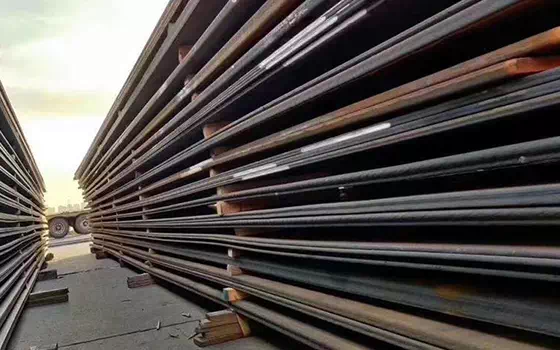Welcome to Zhishang Steel Co., Ltd.
TEL: (Gavin) +86-15665898999 | Email : info@zhishangsteel.com

The calculation of carbon sheet weight is an important engineering task that helps engineers and technicians determine the quality of the material for structural design, cost estimation and logistics planning. Because of its excellent mechanical properties and cost effectiveness, carbon steel plates are widely used in various industries, such as building structures, machinery manufacturing, ship construction and aerospace.
In order to accurately calculate the weight of the steel plate, we need to follow the following steps:
Determine the density of carbon steel plate:
Density is a key parameter in calculating weight, and it represents mass per unit volume. The density of carbon steel plates can usually be found from material data sheets or standard manuals, and may be in grams per cubic centimeter (g/cm³) or kilograms per cubic meter (kg/m³). For specific carbon steel plates, the density may vary depending on the alloy composition and heat treatment process.
Measure the size of carbon steel plate:
The dimensions of the carbon steel plate include length, width and thickness. When actually measuring, a precise measuring tool such as a tape measure or vernier caliper should be used and these dimensional data should be recorded in millimeters (mm). Ensuring the accuracy of the measurement is essential for subsequent weight calculations.
Apply the calculation formula:
The formula for calculating the weight of carbon steel plate is:
Copy code run
Weight = area × thickness × density
The area is obtained by multiplying the length by the width, while the thickness is measured in millimeters. This formula converts volume into mass based on the relationship between volume and density.
Perform an example calculation:
Suppose we have a carbon steel plate with dimensions of 3000 mm in length, 1500 mm in width, 10 mm in thickness, and a density of 7.85 g/cm ³. According to the above formula, we can calculate its weight:
Copy code run
Area = Length × width = 3000 mm × 1500 mm = 4,500,000 square mm
Weight = Area × thickness × density = 4,500,000 square mm × 10 mm × 7.85 g/cm³ = 35,325,000 g
Convert weight to kilograms:
Copy code run
Weight = 35,325,000 grams = 353.25 kg = 353.25 kg
Note:
When doing calculations, it is important to ensure that all the units used are consistent to avoid errors due to unit confusion. For example, if the density is in kilograms per cubic meter, then the thickness also needs to be converted to meters.
This method is suitable for carbon steel plates with conventional shapes, such as rectangles, squares or circles. For non-standard shaped carbon plates, it may be necessary to use integral or numerical methods to calculate their area and volume.
In summary, accurately calculating the weight of carbon steel plates requires understanding the density of the material, accurately measuring the size, and correctly applying the calculation formula. This process is essential for sound engineering design, cost control of material procurement, and budget planning for transportation and installation. In actual operation, attention should be paid to the consistency of the units and the special calculation methods of different shapes of plates.

Zhishang Steel has always been a pioneer in custom steel and special supplies, and has been recognized for its efforts in enhancing work efficiency and product quality. In addition to ISO9001:2015 certification, we also adhere to strict quality policies and proprietary procedures. If you have any questions, please contact us to provide the best type of product solution for your pre-painted, coil coating metal process, we will closely support after-sales service to ensure that your subsequent problems can be solved in a timely manner, if you have any questions, please send email to info@zhishangsteel.com, we look forward to serving you.

Zhishang Steel, specializing in domestic steel products trade, warehousing, processing and other services. The team has four service teams: Shandong Zhishang Steel Co., LTD., Shandong Zhiyiheng Trading Co., LTD., Tai 'an Zhishang Economic and Trade Co., LTD., Shandong Zhishang Steel Structure Co., LTD. Mainly engaged in steel coil, coated, stee···